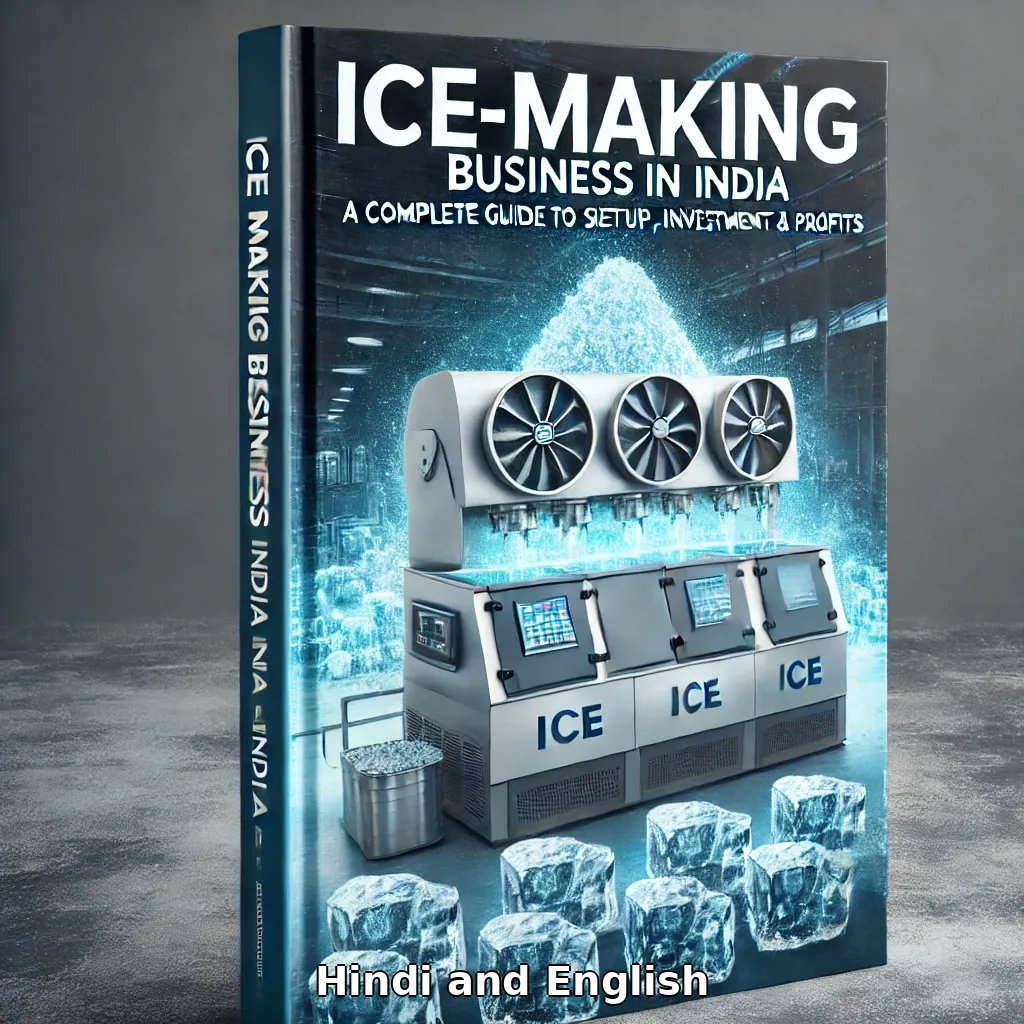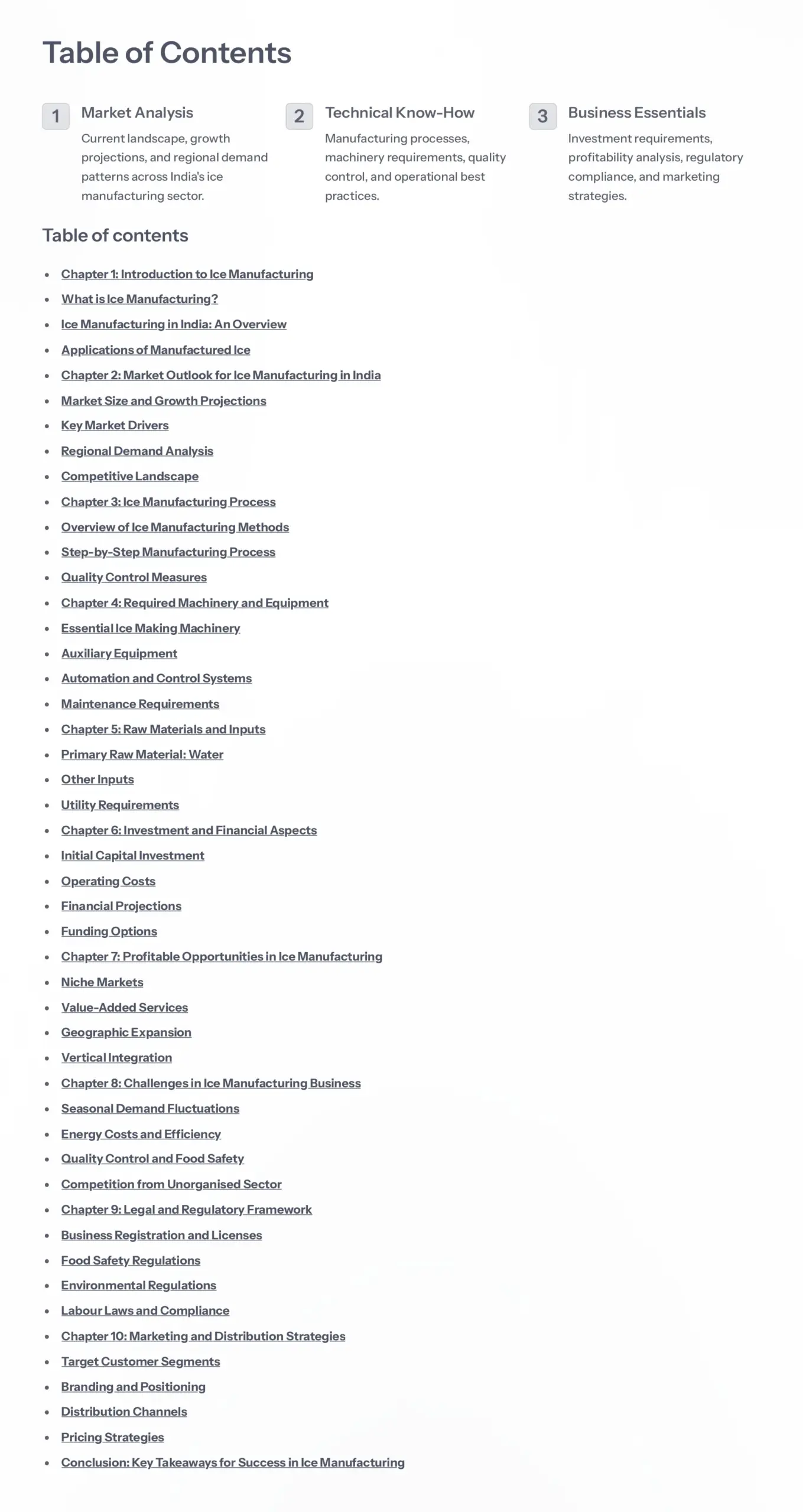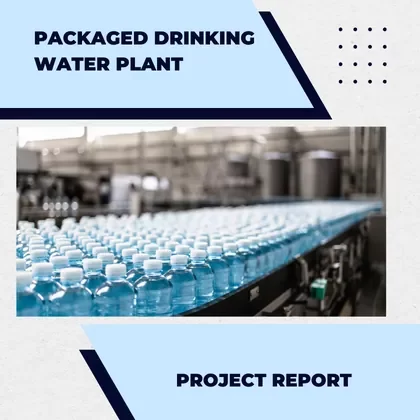Description
When temperatures rise and demand for chilled drinks and food preservation soars, the humble ice cube becomes a vital commodity. Starting an ice making business in India is not only a lucrative opportunity but also an essential service catering to industries like food, hospitality, the healthcare industry, and even construction. If you’re an entrepreneur, investor, or business enthusiast looking to venture into this industry, this guide will walk you through every step of creating a profitable ice making business.
The Growing Demand for Ice in India
Table of Contents
- 1 The Growing Demand for Ice in India
- 2 Conducting a Market Analysis
- 3 Understanding Regulatory Requirements
- 4 Setting Up Your Ice Making Business
- 5 Streamlining Operations
- 6 Financial Planning
- 7 Marketing and Distribution
- 8 Tackling Challenges
- 9 Building a Thriving Ice Making Business
- 10 Why Buy Our eBook on the Ice Making Business in India?
India’s tropical climate, paired with a growing population and urbanisation, has consistently driven high demand for ice. Seasonal spikes during summer further amplify this need, fulfilling essential roles across various sectors. Here’s why ice manufacturing is a growing industry with high profitability potential: The increasing demand for artisanal and premium ice products driven by consumer preferences for quality and unique experiences is also contributing to the market’s growth.
- Food & Beverage Industry: Ice is indispensable for restaurants, hotels, street vendors, and catering services.
- Fisheries and Meat Processing: Freshness is paramount, and ice is critical for preserving perishable goods.
- Medical Usage: Hospitals and laboratories rely on ice for storage and transportation of medical supplies.
- Construction Sector: Ice is an essential ingredient in concrete cooling processes to enhance durability and strength.
With such robust demand and a market that spans multiple sectors, the ice making business offers consistent revenue streams throughout the year.
Conducting a Market Analysis
Key Sectors Driving Demand
- Hospitality (restaurants, hotels, event management).
- Perishable goods industries (fish, meat, vegetables).
- Healthcare (hospitals, labs, pharmaceutical logistics).
- Events and weddings (ice sculptures, cocktails).
Types of Ice and Applications
Choosing the right type of ice to manufacture depends on your target customers. Here are the most common types:
- Cube Ice: Used in households, restaurants, and bars.
- Block Ice: Common in fisheries, logistics, and cooling systems. Ice blocks are produced in various sizes and are essential for bulk storage and transportation.
- Tube Ice: Perfect for drinks and chilled beverages.
- Flake Ice: For bakeries, seafood, and medical storage.
- Dry Ice: Ideal for transporting perishable goods and in the pharmaceutical industry. Wet ice, which retains moisture due to its formation or handling conditions, is also used in various applications but requires careful handling to prevent melting.
Seasonal Demand and Geographical Factors
Areas with consistently warm climates or proximity to industries with high ice consumption have steady demand. Seasonal trends peak in summer, but businesses in the fisheries, medical, and hospitality industries require ice all year.
Understanding Regulatory Requirements
Establishing an ice making business means you’ll need to adhere to certain legal and hygienic standards.
Necessary Licenses and Registrations
- FSSAI license (required for food-grade ice production).
- Factory License for large-scale facilities.
- GST registration to comply with taxation laws.
- Pollution Control Approval depending on your machinery and waste output.
- BIS certification for hygienic and high-quality production standards.
Without the proper regulatory measures, your business could face delays in operations or fines, so these steps should be a priority.
Setting Up Your Ice Making Business
Choosing the Right Location
The location of your facility is crucial. Look for areas that have:
- Reliable access to clean water.
- Steady electricity supply.
- Proximity to target customers.
- Smooth logistics for distribution.
Pro Tip: Urban areas near markets, hospitals, and restaurants make for ideal setups.
Detailed Overview of Plant and Machinery Required for Ice Making Business
Setting up an ice plant requires careful selection of machinery and equipment to ensure efficient production and high-quality ice. Here’s a comprehensive guide to the essential plant and machinery needed for an ice making business: Different types of ice plants, such as those producing tube or flake ice, require customized solutions to meet diverse commercial and industrial needs.
1. Ice Maker Machines
The core of any ice making plant, ice makers come in various types, each suited to different ice forms and business needs:
- Cube Ice Machines: Ideal for producing ice cubes commonly used in households, restaurants, and bars. These ice cubes machines are designed for high-volume production and can be customized to produce different sizes of cubes.
- Block Ice Machines: Used primarily in industries like fisheries and logistics, block ice machines produce large blocks of ice that are easier to handle and store for bulk usage.
- Flake Ice Machines: These flake ice machines are perfect for applications requiring soft, moldable ice, such as in bakeries, seafood preservation, and medical storage.
- Tube Ice Machines: Known for producing cylindrical ice, tube ice machines are popular in the beverage industry and for cooling drinks.
2. Water Purification System
Ensuring the purity and quality of the water used in ice production is crucial. A robust water purification system, often incorporating Reverse Osmosis (RO) technology, is essential to remove impurities and ensure compliance with health and safety standards.
3. Cold Storage Solutions
To maintain the integrity and quality of the ice, adequate cold storage solutions are necessary:
- Freezers: Industrial-grade freezers are used to store ice at optimal temperatures, preventing melting and maintaining freshness.
- Insulated Storage Rooms: These rooms are designed to keep large quantities of ice at stable temperatures, ensuring they remain frozen until distribution.
4. Packaging Equipment
Packaging plays a vital role in delivering ice to clients hygienically and efficiently:
- Automatic Packaging Machines: These machines automate the process of bagging ice, ensuring consistency in size and weight, and maintaining hygiene standards.
- Sealing Machines: Used to securely seal ice bags, preventing contamination and leakage during transportation.
5. Refrigeration Units
Refrigeration units are integral to the ice making process, providing the necessary cooling power to freeze water into ice. These units must be energy-efficient to reduce operational costs and minimize environmental impact.
6. Conveyors and Handling Equipment
To streamline the production process, conveyors and other handling equipment are used to transport ice from the production area to storage and packaging zones. This equipment improves operational efficiency and reduces manual labor.
7. Control Systems
Modern ice making plants are equipped with advanced control systems that monitor and manage the entire production process. These systems ensure optimal performance, quality control, and energy efficiency.
Investing in the right machinery and equipment is crucial for the success of your ice making business. It not only affects the quality of the ice produced but also impacts operational efficiency and profitability. By carefully selecting and maintaining your plant and machinery, you can ensure a steady supply of high-quality ice to meet the growing demand in various industries.
Sourcing Raw Materials
- Water (filtered and purified for quality control).
- Refrigerants for freezing (such as ammonia or freon-based).
- Packaging (plastic bags, cartons, or insulated boxes).
Make sure your raw materials align with your production capacity and standards.
Streamlining Operations
Ice Production Process
The ice production process is a meticulous sequence of steps designed to ensure the creation of high-quality ice that meets industry standards. Here’s a detailed breakdown of the process:
- Water Purification: The journey begins with sourcing water, which is then purified using advanced RO (Reverse Osmosis) systems. This step is crucial to remove impurities, ensuring the ice produced is clean and safe for consumption. The purity of water directly affects the clarity and taste of the ice, making this an essential step in maintaining quality control.
- Filling Moulds or Trays: Once the water is purified, it is poured into moulds or trays. The choice between moulds and trays depends on the type of ice being produced, whether it’s block ice, cube ice, or tube ice. Each form requires specific moulds to achieve the desired shape and size.
- Freezing Process: The filled moulds or trays are then transferred to freezing units. These units are equipped with refrigeration systems that rapidly lower the temperature, turning the water into ice. The freezing process is carefully monitored to ensure uniformity and prevent air bubbles, which can affect the ice’s structure and transparency. The inner surface of the freezing units plays a critical role in ice formation and often requires mechanical processes to remove ice buildup.
- Harvesting Ice: Once the ice has solidified, it is harvested using automated defrost systems. These systems gently release the ice from the moulds without causing any damage. Automation in this step enhances operational efficiency, allowing for a consistent and timely production cycle.
- Cutting and Shaping: Depending on customer requirements, the ice may need to be cut into specific shapes and sizes. This is achieved using specialized cutting equipment that ensures precision and uniformity. Whether it’s block ice for industrial use or cube ice for beverages, each piece is crafted to meet exact specifications.
- Packaging: After cutting, the ice is packaged using automatic packaging machines. These machines ensure that the ice is hygienically sealed in bags or containers, preserving its quality and preventing contamination during transportation and storage.
- Cold Storage: Finally, the packaged ice is stored in cold rooms or industrial-grade freezers. These storage solutions maintain optimal temperatures to keep the ice frozen until it is ready for distribution. Proper storage is crucial to prevent melting and to maintain the ice’s integrity during transit.
By following these detailed steps, ice making plants can produce ice that meets the high standards expected by customers across various industries. Each stage of the process is designed to enhance operational efficiency, maintain quality, and ensure customer satisfaction.
Quality Control Measures
- Regularly monitor water quality to ensure contamination-free ice.
- Calibrate machinery to sustain consistent production standards.
- Maintain hygienic packaging practices to satisfy industry guidelines.
- Key factors such as location, operational efficiency, market demand, and competition are crucial in determining the sustained profitability and strategic planning of the ice making business.
Efficient Storage and Packaging
Having adequate storage is crucial for preventing losses caused by melting. Insulated storage rooms and robust packaging systems will ensure your product quality remains intact during distribution.
Financial Planning
Cost of Production
The initial investment varies depending on the scale of operations. Key expenses include machinery, land, utilities, and working capital. Here’s an estimate:
- Small-scale business (~₹8-15 lakhs).
- Medium-scale business (~₹25-50 lakhs).
- Industrial scale (~₹1 crore+).
Profit Margin and Pricing
With an average production cost of ₹2-₹3 per kg of ice and a selling price of ₹6-₹10, profit margins can range from 30% to 50%. Efficient operations and reaching high-volume clients improve overall profitability.
Return on Investment
Most businesses break even within 1-2 years, depending on geographical location, operational efficiency, and demand.
Marketing and Distribution
Building Distribution Networks
- Partner with restaurants, hotels, and street vendors.
- Sell in bulk to fish/meat markets and local groceries. Fishermen often produce their own ice onboard to address the challenges of storing sufficient ice from shore plants, which has economic and logistical implications.
- Introduce home delivery services in urban areas.
Marketing Strategies
- Use branding and packaging to differentiate your ice.
- Promote via social media and Google Business profiles.
- Offer discounts for bulk orders or seasonal promotions.
Pro Tip: Leverage the wedding and event management industries for large orders.
Tackling Challenges
Common Issues
- High electricity costs for industrial ice production.
- Transportation and storage difficulties in preventing melting.
- Market price competition, especially from unregulated local suppliers.
Practical Solutions
- Invest in energy-efficient machinery to reduce power costs.
- Partner with reliable logistics providers to improve supply chains.
- Carve out a niche by offering premium hygienic or specialty ice types. The healthcare industry also sees increasing demand for ice in rehabilitation procedures, which highlights the importance of maintaining high-quality production standards.
Building a Thriving Ice Making Business
The ice making business in India offers a golden opportunity for entrepreneurs to tap into a year-round demand. By addressing regulatory requirements, streamlining operations, and building efficient distribution networks, you can build a business with scalable growth and sustainable profit margins.
Whether you’re ready to start small or aim to serve large-scale industries, the key to success lies in careful planning and adapting to market needs. If you have the drive to make this cool venture a reality, now is the perfect time to take the plunge!
Why Buy Our eBook on the Ice Making Business in India?
Our eBook provides a comprehensive guide to starting and scaling an ice making business in India. It covers every critical aspect, from understanding market trends and navigating regulatory requirements to optimising production and distribution strategies. This resource is designed for aspiring entrepreneurs looking to make informed, profitable decisions in a competitive market.
By purchasing our eBook, you gain access to expert insights, actionable advice, and detailed financial projections tailored to the Indian business landscape. Whether you are new to the industry or looking to enhance your existing operations, this eBook serves as a valuable blueprint for success. Invest in knowledge today and take one step closer to building a thriving ice making business.
How to Prepare a Project Report for an Ice Making Business
A well-structured project report is essential for securing funding, gaining stakeholder confidence, and outlining a clear business plan for your ice making venture. Below are the key components to include:
- Executive Summary
Provide an overview of your business idea, objectives, and key highlights of the project. This section should give potential investors and stakeholders a concise understanding of your goals.
- Market Analysis
Include research on the demand for ice in your target market, customer segments, and competitive landscape. Highlight trends and identify opportunities that differentiate your business from competitors.
- Operational Plan
Outline the production process, equipment requirements, raw material sourcing, and workforce planning. Include details on factory location and capacity to demonstrate scalability.
- Financial Projections
Present estimated costs, revenue, and profitability metrics. Include a detailed breakdown of startup costs, working capital requirements, and anticipated return on investment (ROI).
- Regulatory Compliance
Highlight licenses, permits, and certifications required to operate legally in India. Explain the steps involved in obtaining these and the associated timelines.
- Risk Analysis and Mitigation
Identify potential risks, such as supply chain disruptions or seasonality challenges, and propose strategies to manage them effectively.
By following this structure, your project report will serve as a comprehensive roadmap and a compelling document to attract investors and guide your business operations.
Project Report Preparation Services
If you require a professional project report for securing a bank loan or for other purposes, our experts are here to assist you. We specialize in creating detailed, accurate, and customised reports tailored to meet the specific requirements of financial institutions and regulatory bodies. Our team ensures that your report includes all necessary components, such as market analysis, financial projections, regulatory compliance, and risk assessments, greatly improving your chances of approval and ensuring clarity for stakeholders. Contact us to get your project report prepared efficiently and professionally.
Disclaimer: This article includes affiliate links in the machinery section. We may earn a commission if you make a purchase, but this does not affect the price you pay. Recommendations are meant to assist and guide you in making informed choices.









